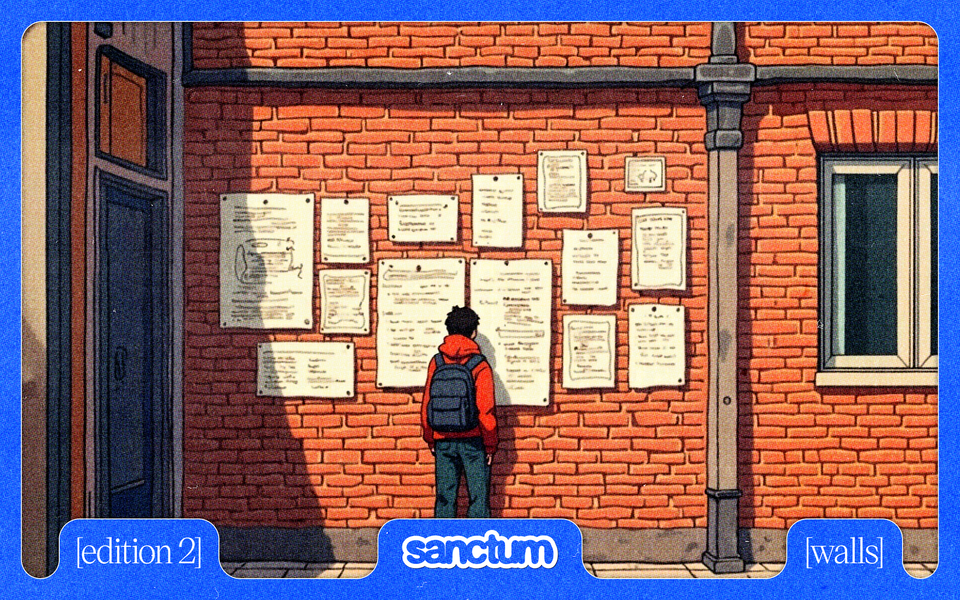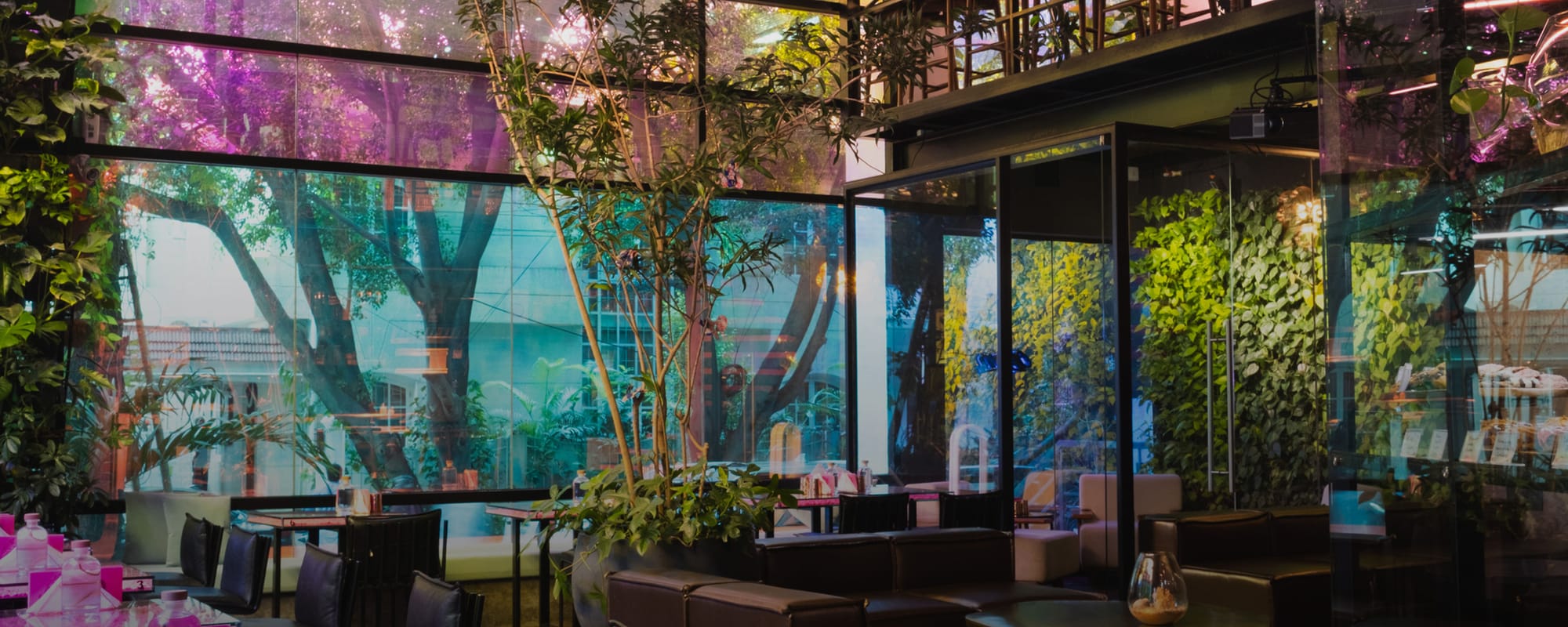How Walls Became India’s Social Media

Before we doom-scrolled, we simply strolled past messages that weren't curated by cookies but by concrete. India's walls have been silently archiving our collective consciousness since before the idea of MySpace was even conjured.
These sun-baked surfaces were our first social timeline — displaying an analogue feed that didn't need electricity, just eyeballs. And honestly? The engagement metrics were spectacular. That massive hand-painted Parle-G advertisement wasn't just selling biscuits; it was accumulating impressions at unimaginable rates.
Wall painters across India were the original content creators, armed with nothing but brushes, vibrant paints, and an extraordinary vision.
A prime wall near the local chai stall guaranteed maximum impressions every morning, all you had to do was make sure the ad was plastered there. The 67 tuition advertisement posters at the local dry cleaner’s competed for parents’ attention with just a phone number as a contact detail on them.
The walls have had stories to tell since the dawn of humankind.
From cave paintings to metaphors — the lore is endless.
Were you ever warned about the walls having ears? As a kid, it’s just a funny phrase. As you grow older, you start believing it. You start watching out for eavesdroppers before you speak, lest you end up on Reddit.
What is gossip if not the original viral content? It contains all the elements digital marketers try to engineer: emotional triggers, unexpected twists, relatability, and that all-important "you won't believe what happened next" hook.
Aunties exchanging neighbourhood updates were essentially running a decentralised content distribution network. Today, you walk from the bus stop to the market with a friend of the opposite gender, and your family has heard about some unrealistic scenarios even before you step inside. Stories with a splash of drama have always spread like wildfire, even before the internet, because community is the heart of our society, and a community gathering is never complete without some piping hot tea.
The character development was impeccable, too. Mrs. Sharma's son’s marriage talks were a slow-burn narrative that unfolded over months, with nuanced storytelling and unexpected plot twists that Netflix would want to get their hands on. The popularity of Indian Matchmaking and, before that, Bigg Boss, is evidence enough that this is not a hypothetical scenario.
Society thrives on tea, and there will always be a wall you can’t see that is listening, physical or digital.
However, the wall doesn't pass judgment.
Most parasocial relationships, at some point, meet the wall.
The weathered posters of our favourite artists were the original parasocial relationship package, available without a subscription fee. Before we felt like we knew social media influencers personally because we watched their morning routines, we had equally intense emotional connections with images on our walls.
The torn Shah Rukh poster on a teenager's wall was performing the same function as every creator on social media today, regardless of their celeb status — creating the illusion of intimacy with someone who has absolutely no idea you exist. The difference? You only saw the poster as it was, but a creator’s life is always in your face as long as you choose to follow them.
We act like parasocial relationships are some new digital phenomenon, but Indians have been maintaining complex emotional connections with images on walls since Bollywood first figured out how to mass-produce posters. In the urban context, the larger than life murals on Mumbai’s walls by Ranjit Dahiya are a testament to the timeless nature of this paraosocial connection (and India’s love for Bollywood).
Speaking of art, have you been to Neon Market?
In the heart of Bengaluru's busy roads, sits a space for the city's creative souls. A one-of-a-kind space for the city's vibrant souls, Neon Market opened its doors in December 2023 and has become the talk of the town. It's the home for the convergence of fashion, food and media, making it the perfect spot for people who enjoy unique experiences.
The Neon Market stood out to us because of how loudly its walls extend an invitation to you. One look and you instantly know something cool is happening inside, and your legs walk you to the doors before you know it.

Urban Indian aesthetics have evolved into enthusiastic bids for eyeball time, optimised to appear in our increasingly selective field of vision, adapting to an economy where attention is scarce. This is a full-circle moment, a nod to the pre-Internet era of catching eyeballs. The only difference is that it now serves as a medium of getting eyeballs offline AND online.
The brighter and cooler your cafe’s walls, the higher the footfall. Which brings us to the question…
Do we even know what’s in our physical space anymore?
We've become so accustomed to the constant stimulation of digital content that our ability to notice physical spaces has fundamentally changed. The wall could be showing the winning lottery numbers, and we'd miss it because we're checking the hundred notifications on our phones.
This attention deficit has created a strange arms race in physical design — spaces becoming increasingly outlandish just to register in our consciousness. It's the architectural equivalent of typing IN ALL CAPS.
Our physical environment is essentially screaming for attention, but we've redirected it elsewhere.
What can, then, make us look up?
Metaphysics of the Wall: Where are we headed?
As augmented and virtual reality progress, the walls between our physical and digital worlds are falling. QR codes transport us instantly to digital spaces. Augmented reality overlays digital information onto physical surfaces. We're creating hybrid realities where the wall in front of you simultaneously exists and doesn't exist, displaying both physical posters and digital content depending on whether you're looking through your phone camera or with your eyes.
When a wall both is and isn't a wall depending on the technology mediating your perception, we've essentially created a contemporary version of philosophical questions that have troubled great minds for millennia. Vedic philosophy has long grappled with concepts of Maya – the illusion that separates us from true reality. Now we're navigating between physical walls and social media Walls, both equally constructed realities designed to show us what someone thinks we want to see.
What happens when walls don't just display but respond? When does every surface become potentially interactive?
We're moving toward a reality where boundaries between spaces become conceptual, much like how our "private" digital communications have become public performance. The wall in front of you might display entirely different content than what the person standing next to you sees, creating parallel realities occupying the same physical space. The beauty is obvious because it is quite literally in the eyes of the beholder.
After decades of fragmenting shared experience into billions of personalised feeds, we have eventually circled back to creating digital and physical commons that function more like those community walls that have served us for centuries — persistent, public, collective experiences rather than private, personalised ones. The discourse around “third spaces” and the effort urban India is putting into building those is evidence that community is necessary for human sanity.
The walls we built in an effort to isolate ourselves have shown us that maybe we didn’t have to put them up in the first place.
We should have been looking for and building doors instead.
The humble wall turns out to contain multitudes.
It's been our social media, our community bulletin board, our art gallery, and our historical record. As we race toward increasingly sophisticated digital experiences, perhaps we should pause occasionally to appreciate these vertical surfaces that have faithfully documented our collective consciousness through centuries of change.
Saw a lot of misinformed folks on Twitter calling Topmate a scam, “OnlyFans for techies”, “Calendly with payments” etc.
— Nimisha Chanda (@NimishaChanda) April 29, 2025
So I did what any sane marketer would do...
I printed their rants and pasted them all over HSR. Spot us if you are around.
If you can’t ignore it, repurpose… pic.twitter.com/uFbZ0l3DGH
Some genius moves by Nimisha in BLR, using the trusted marketing channel - walls.
After all, when the power goes out and your phone battery dies (which is possible, just happened in Spain and Portugal!), the walls will still be there displaying messages, still telling stories, still performing the ancient function of humanity's original shared screen. They will still exist for you to create doors and treat them as connectors instead of barriers.
As we build new digital and physical spaces, the challenge will be to decide which walls to keep and which to tear down.
So, look up from your phone. At the wall.
The art of being present is underrated. And once you start practising it, you'll see why it is worth one less scroll on a screen.
Design is a lot of things, and an essential part of a designer's identity is the ability to find inspiration in the mundane and the extraordinary. You're a designer, too, of your own life. It's time you looked for inspiration around you.
Who knows, maybe it'll spark a creative eureka moment?
What is an item on your wall that you refuse to part with?
Share this on X with your story (don't forget to tag us), and get a chance to feature in the next edition of Sanctum! Have a friend with the coolest walls around them? You could share their story with us, too.

Member discussion